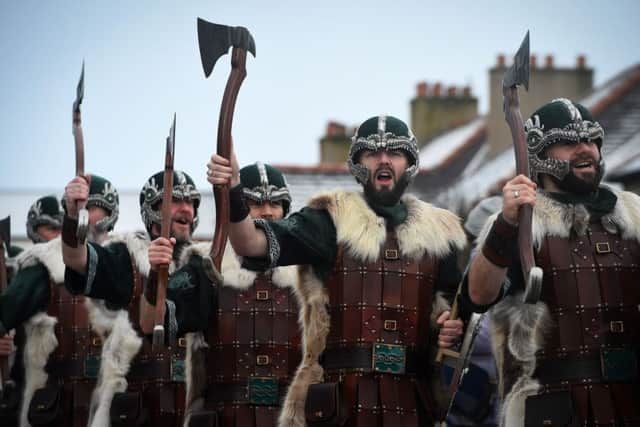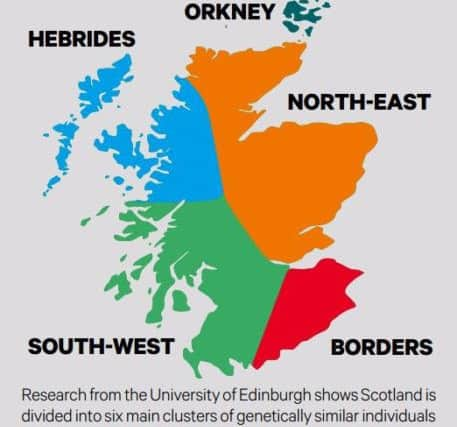Genetic ‘map’ shows Dark Age Scottish kingdoms live on in today’s Scots
But rather than all traces of such peoples being lost in the mists of time, Scotland’s first comprehensive genetic map reveals the DNA of Scottish people still contains signs of the ancient kingdoms, with many apparently living in the same areas as their ancestors more than a millennium ago.
Research from the University of Edinburgh shows Scotland is divided into six main clusters of genetically similar individuals located in the Borders, the south-west, the north-east, the Hebrides, Orkney and Shetland.
Advertisement
Hide AdAdvertisement
Hide AdThese groupings mirror Dark Age kingdoms such as Strathclyde in the south-west, Pictland in the north-east and Gododdin in the south-east.


The Dark Ages date from around the end of the Roman Empire in 476 AD to around 1000 AD.
In addition to showcasing Scotland’s genetic continuity, experts believe the population analysis could aid the discovery of rare DNA differences that might play major roles in human disease.
The new data also means this is the first time the genetic map of the UK and the Republic of Ireland is seen in its entirety.
Professor Jim Wilson, from the university’s Usher Institute and MRC Human Genetics unit, said: “It is remarkable how long the shadows of Scotland’s Dark Age kingdoms are, given the massive increase in movement from the industrial revolution to the modern era.


“We believe this is largely due to the majority of people marrying locally and preserving their genetic identity.” Prof Wilson added: “At present, very often when people are researching conditions such as diabetes they focus samples on those living around the main medical centres of Edinburgh, Glasgow, Aberdeen or Dundee.
“We’ve analysed DNA from all corners of the country. Yes, we have this great map, but it is also the groundwork to ensure all populations benefit from genomic medicine.”
The study looked at the genetic makeup of more than 2,500 people from Britain and Ireland, including almost 1,000 from Scotland, whose grandparents or great grandparents were born within 50 miles of each other.
Advertisement
Hide AdAdvertisement
Hide AdResearchers from the university and those from the Royal College of Surgeons in Ireland then compared this with the DNA of people who lived thousands of years ago.
Experts found Orkney and Shetland had the highest levels of Norwegian ancestry outside Scandinavia and that many islands within the archipelagos had their own unique genetic identity.
It also emerged the founders of Iceland may have originated from north-west Scotland and Ireland, and the Isle of Man is genetically predominantly Scottish.
The study, partly funded by the chief scientist office of the Scottish Executive, is published in the journal Proceedings of the National Academy of Sciences of the United States of America.